
- Home
- Altars
- Architecture
- Attire
- Bamboo
- Cities and Roads
- Elevation
- Fruits
- Lotus
- Markets
- Music
- Natural Resources
- Rice
- Rivers & Waterways
- Where is Vietnam?
Rice
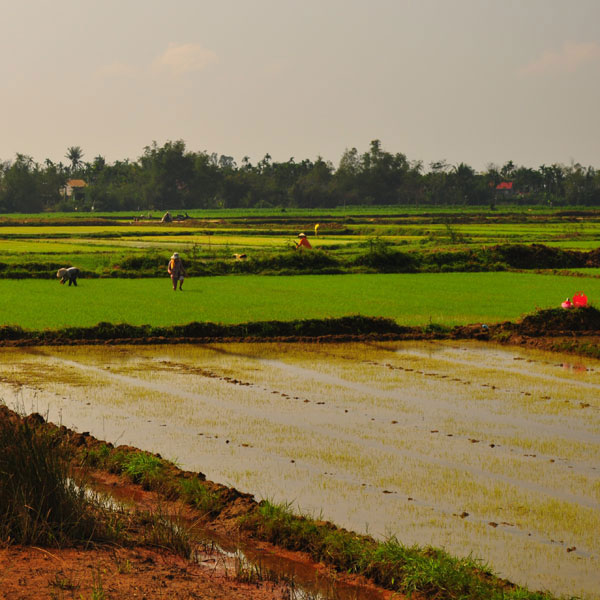
Rice has been grown in Vietnam for thousands of years. It is one of the top five largest rice producing countries in the world. The Mekong River Delta (the 'Rice Bowl') in southern Vietnam is where most of Vietnam’s rice is grown. Rice is also grown in the Red River Delta in the northeast part of the country, and on the north-central coast. Most rice grown in Vietnam is wet-rice, meaning that it is grown in flooded fields rather than dry land.
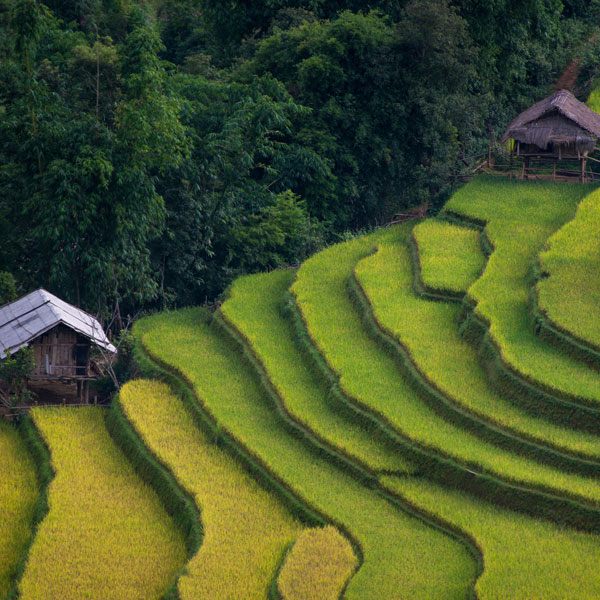
Terraced rice paddies cover the highlands of Sapa, Northern Vietnam.
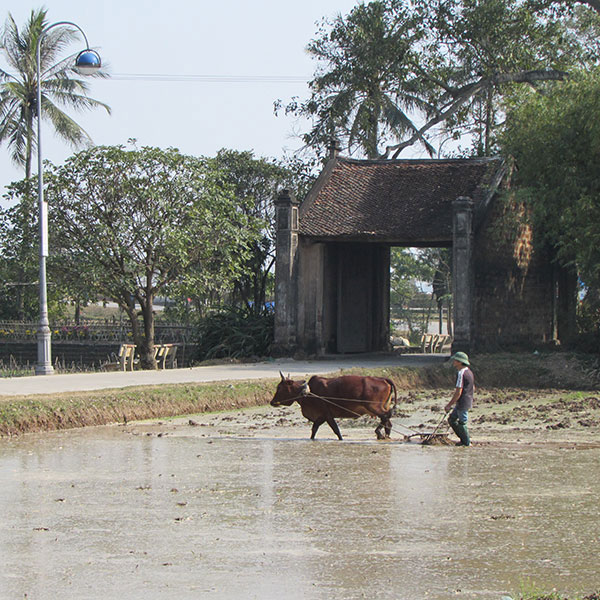
A farmer tills the rice paddy for seed planting with the help of a water buffalo. Duong Lam Village (13km from Ha Noi).
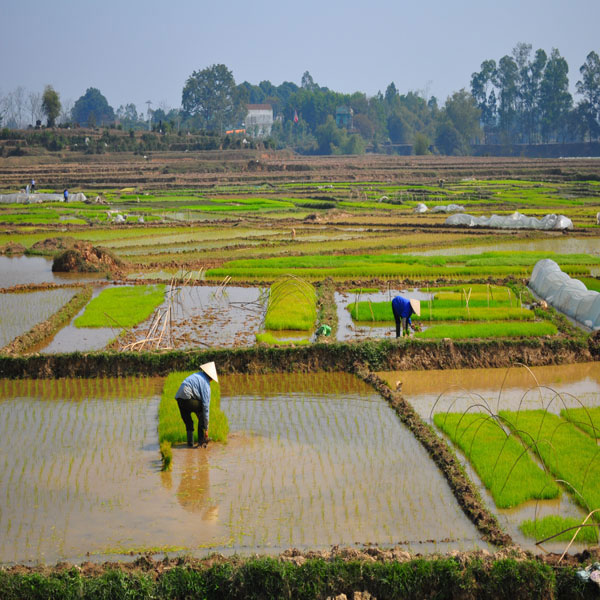
Farmers transplant young rice plants in the prepared paddy. Duong Lam Village (13km from Ha Noi).
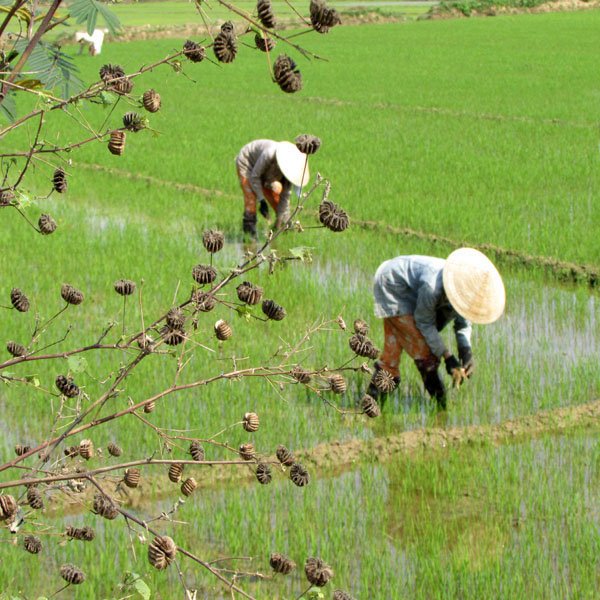
The Mekong River and its tributaries are crucial to rice production in Vietnam. A total of 12 provinces make up the Mekong Delta, which house about 17 million people, 80% of whom are engaged in rice cultivation.
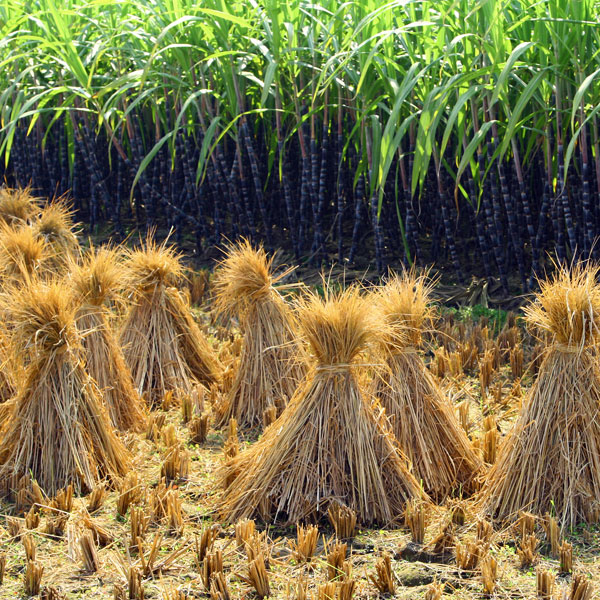
Rice paddies need to be completely drained before they are harvested. White rice, which is most common in Vietnam, is brown rice that has had its husk, bran and germ removed.
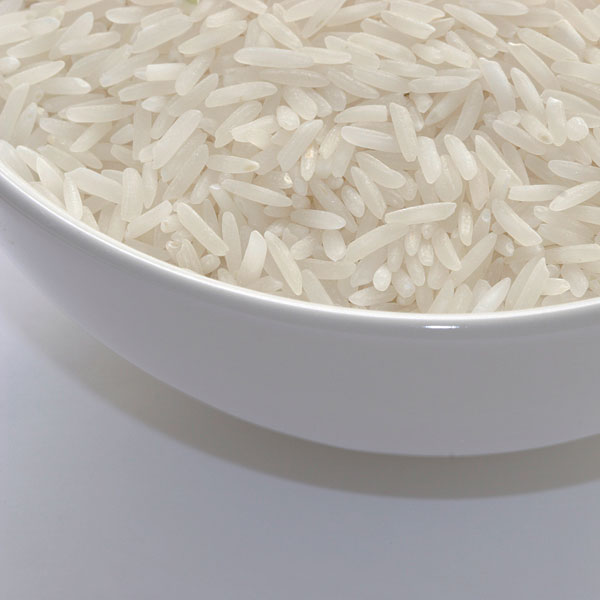
White rice is prepared in a variety of ways in both savory and sweet Vietnamese dishes. Rice is eaten steamed with daily meals and made into a variety of different size noodles, pancakes, dumplings, rolls and alcoholic drinks.
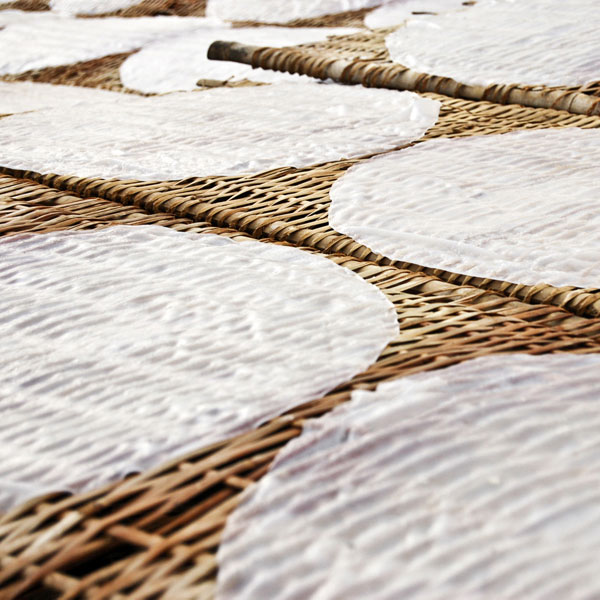
Rice paper, called banh trang or banh da, is dried on a bamboo rack. It is used to make fresh summer rolls or fried spring rolls. It is sold dried in thin, crisp, translucent round sheets. They are dipped briefly in hot water to soften them, and then wrapped around savory or sweet ingredients.
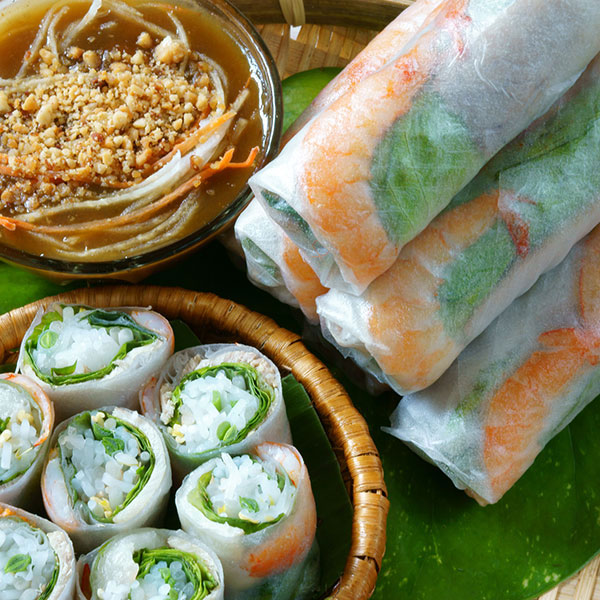
Nem cuon, Banh trang cuon, or Goi cuon, Vietnamese spring roll, summer roll, or salad roll, are typically filled with prawn, pork, vegetables, bun (vermicelli rice noodles), and other ingredients and then wrapped in rice paper (banh trang).
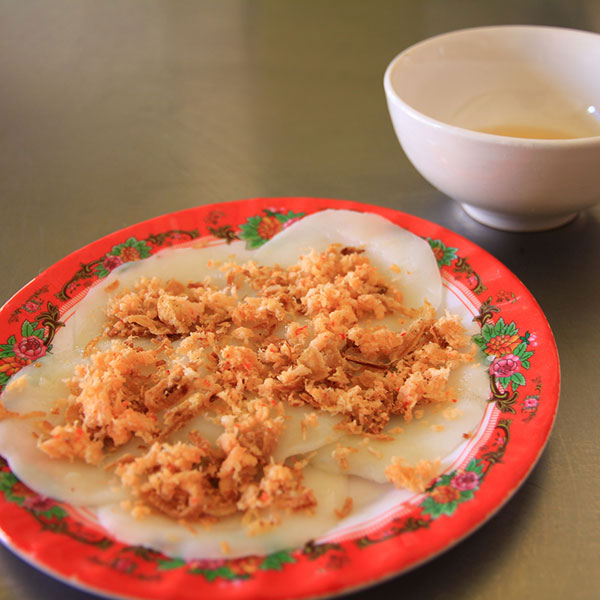
Banh beo is a small steamed rice cake or pancake with a dimple in the center, filled with savory ingredients including chopped dried or fresh shrimp, scallions, mung bean paste, crispy fried shallots, fish sauce, rice vinegar, and oil.
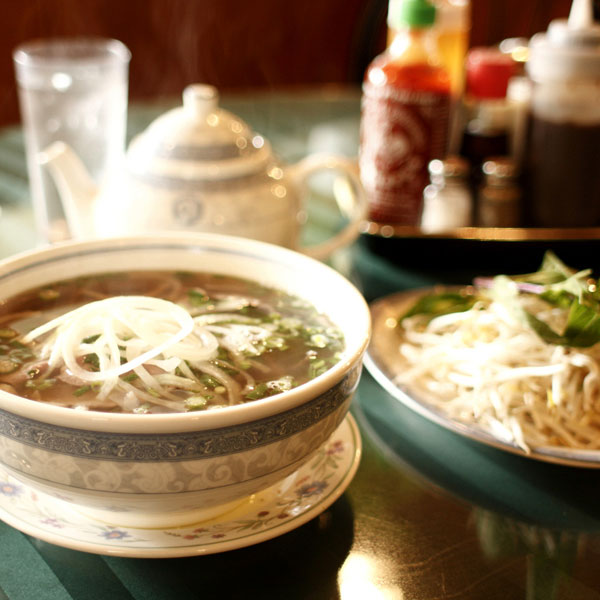
Pho is a noodle soup consisting of broth, flat-shaped rice noodles called banh pho, and beef, pork, or chicken. Fresh herbs like mint, basil, bean sprouts and lime are added just before eating to flavor the soup. This famous Vietnamese soup is now available in many places in the United States.
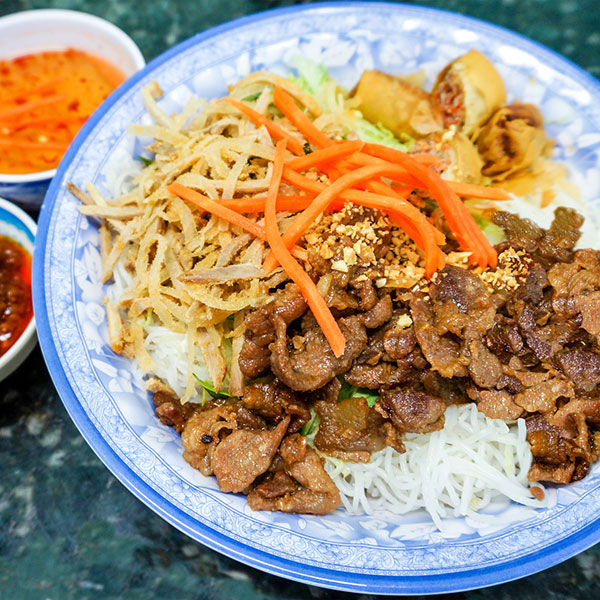
This photo features a traditional bowl of Vietnamese bun, a rice noodle salad with charbroiled meat, shredded pork, deep fried spring rolls and pickled carrots served with mint leaves, peanuts and fish sauce.
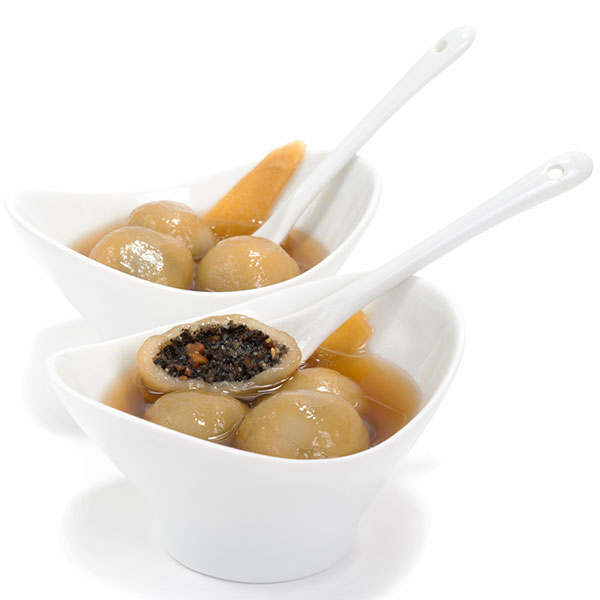
Many sweet dishes are made with rice, from banh bo, a sweet, chewy sponge cake made from rice flour, water, sugar, and yeast to glutinous rice balls filled with sweet bean paste, known as che (featured here).
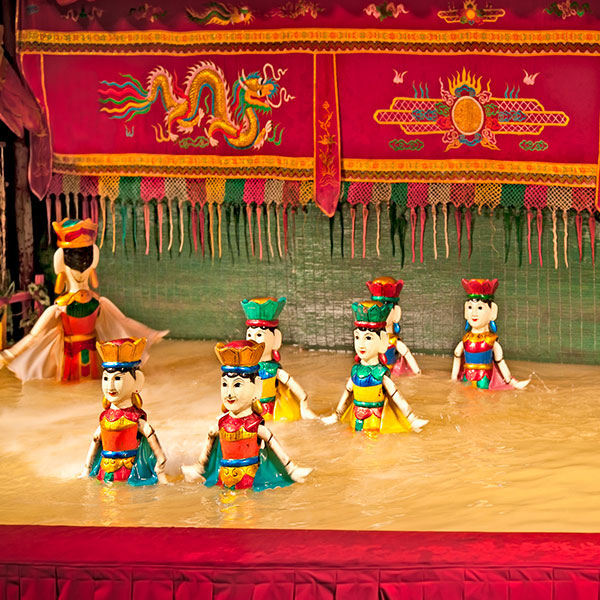
Water puppets are an original Vietnamese art form. The original water puppet festivals were performed inside a rice paddy, with a pagoda built on top to hide the puppeteers who stand in the waist-deep water. The water acts as the stage for the puppets, and as a symbolic link to the rice harvest.
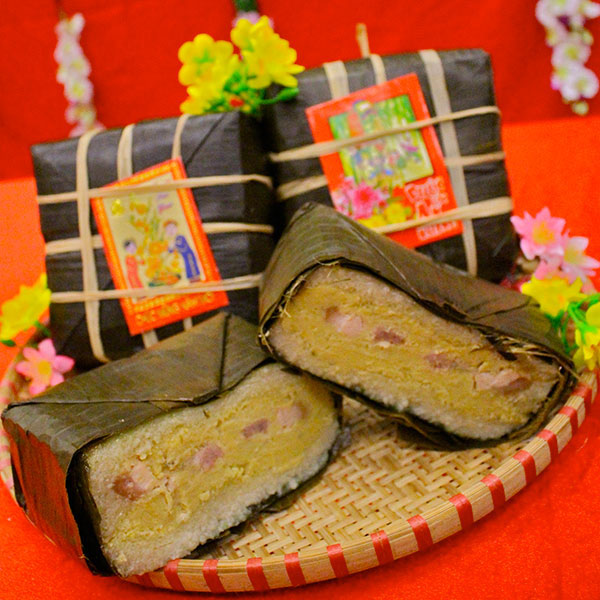
Two types of rice cake are famous in Vietnam, especially during the new year holiday celebration called Tet. Each cake takes up to 12 hours to cook in boiling water. Banh chung is made from glutinous rice, mung bean, pork and other ingredients. Banh tet is much the same but cut in a circular form.
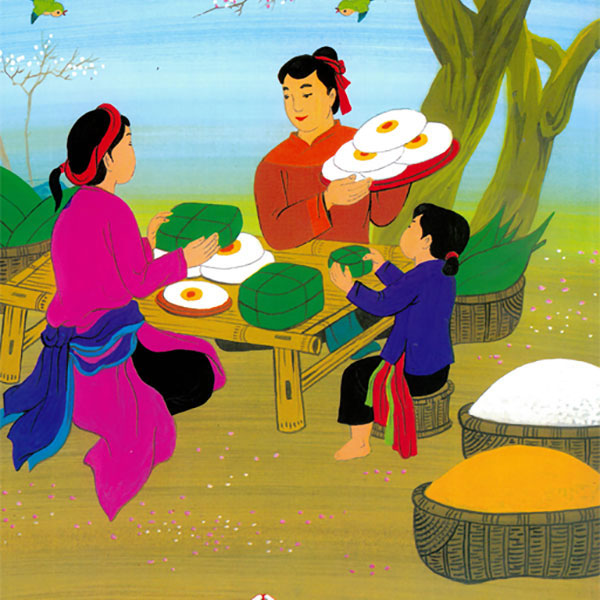
A famous Vietnamese legend tells the story of the two rice cakes made of glutinous rice. The Legend of Banh Chung features a young prince who wins the right to be king by making these simple and delicious cakes using the precious ingredient of rice. One cake is square and one cake is round, representing both the sky and the earth, and the cakes symbolize the virtue of respect and reverence towards elders and ancestors. For the new year’s celebration each year, families gather together to make and then eat the special symbolic rice cakes.
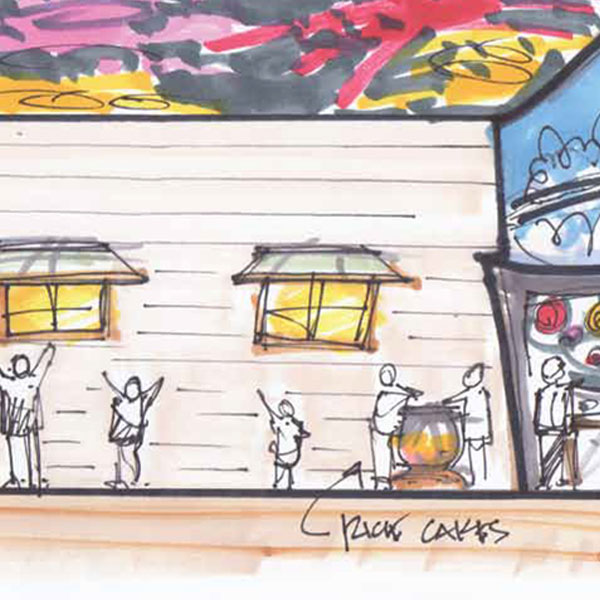
The Voyage to Vietnam exhibition features two different exhibits about rice: a Water Puppet Theater, and an exhibit about making rice cakes.